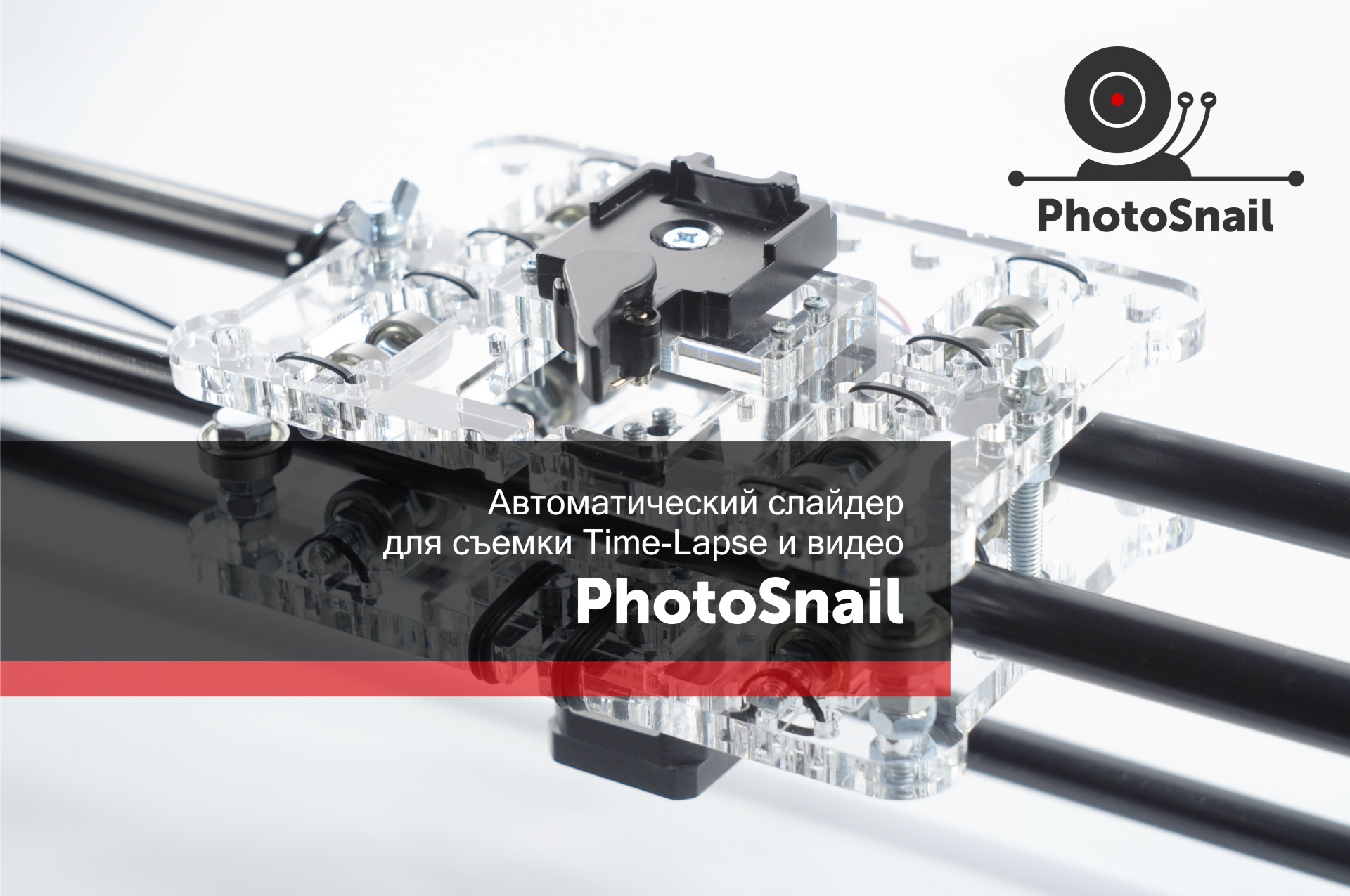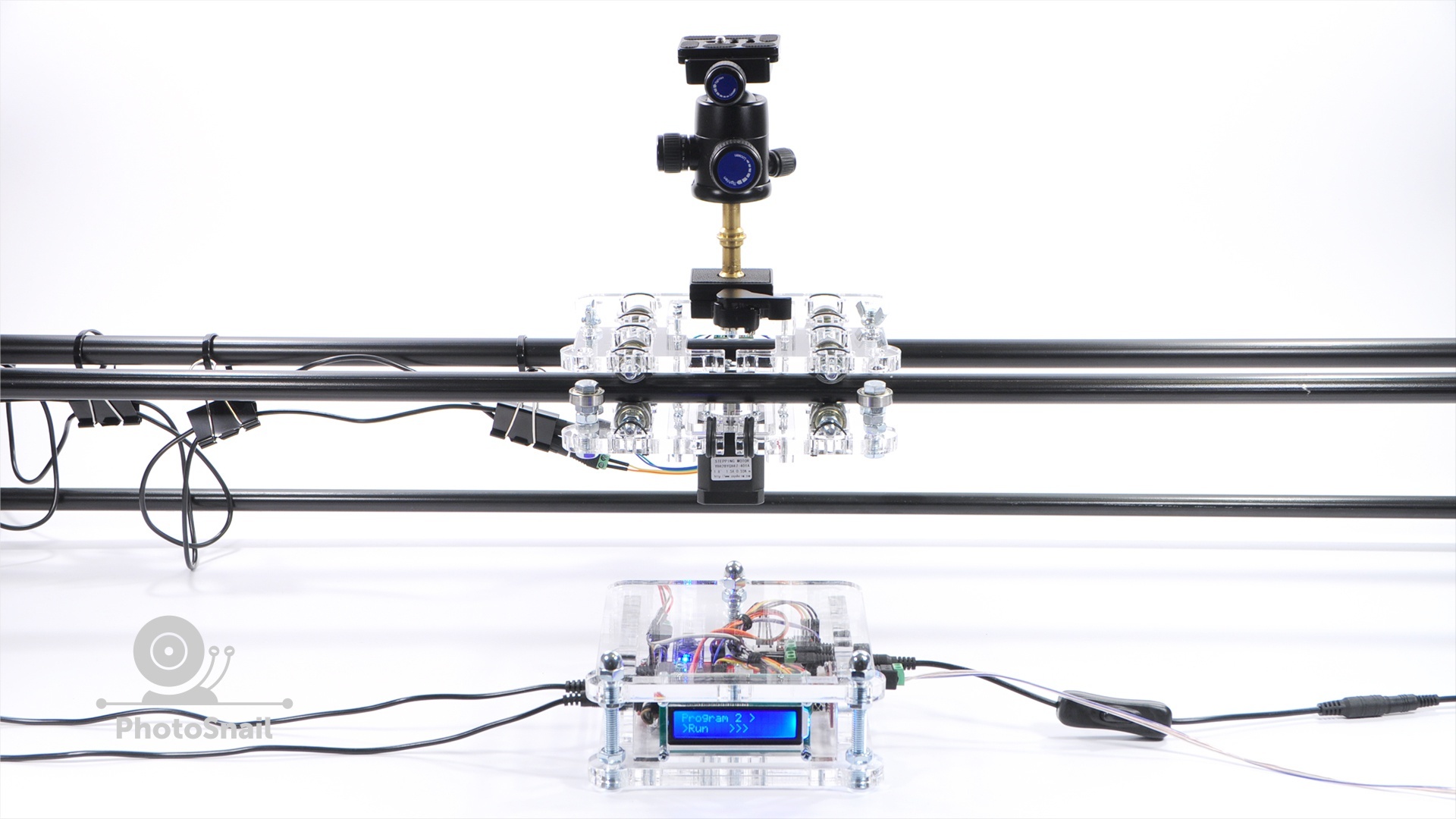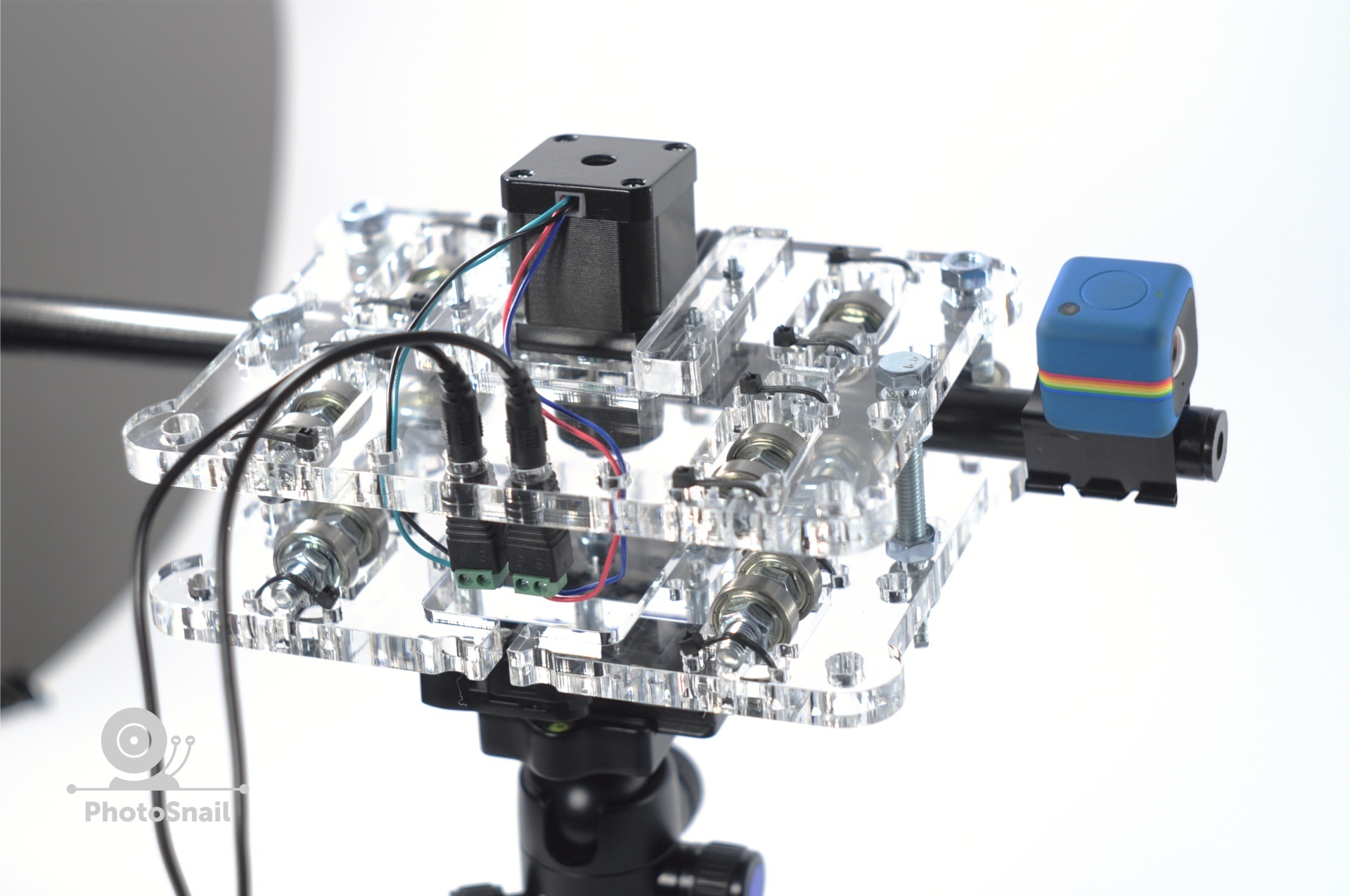DIY motorized slider for shooting TimeLapse and video
- Tutorial

Hello!
I got a working version of the PhotoSnail slider, which I wanted to share.
What is PHOTOSNAIL?
PhotoSnail is an open project of a system for automated moving of a shooting camera (Slider) with automatic tracking of objects, for photo and video shooting. There is also an idea to use it to create an incomplete Photo 360 .
The control unit of the system is based on Arduino and the same as in the open project PhotoPizza
PhotoSnail is under development and now only platform movement along guides with customizable parameters is implemented. In the program settings, you can set the total length of movement of the shooting camera, the number of frames, direction, acceleration and pause for shooting. The camera is connected to the control unit via a sync cable and any camera model with a connector for connecting a wired remote control is supported.

EXAMPLE OF VIDEO RECORDING WITH MOVING A CAMERA
EXAMPLE OF PHOTO RECORDING TIME-LAPSE WITH MOVING A CAMERA
Examples created using similar sladers.
I will publish my own examples in an update to this article.
BASIC IDEA OF THE PROJECT
LOW COST - my goal was to create a truly affordable solution that would be affordable for many amateur photographers and businesses of all sizes. As a result, the total cost of all elements is significantly lower than any analogues comparable in characteristics.
AVAILABILITY OF COMPONENTS - I specially selected the components so that you do not have significant problems with their search and purchase. For example, the project uses bearings from roller skates, which you can find in the nearest sports store.

EASY ASSEMBLY - assembly of the structure will not take you much time and will not require special knowledge or tools.
The electronics of the control unit is assembled without using a soldering iron.
UNIVERSALITY -I try to create equipment whose elements can be used to solve additional problems.
For example, a slider can be used as a drive to move the bar, at the end of which an action camera is fixed.
This method of movement can be used to solve creative problems. Create a flight of the camera through obstacles with the Time-lapse effect or just shooting a video.


The slider is not limited to the drive belt and can travel long distances.
As guides, I use an IKEA curtain rod, for fastening the guides from the same set for fixing the cornice.
The cornice can be docked to increase the length of movement of the slider.
The slider can be used for stacking.
To increase the depth of field in macro photography.
Several frames of the subject are taken at different distances and then these frames are stitched into one photo.
A new rail mount is under development.
Will support round and square guides, tripod mounts.


DESIGN
The slider consists of two platforms that are pulled together and clamp the guides together, relying on the pressure rollers.
Thus, the slider itself aligns the guides parallel to each other.
Guides can be suspended from trees, tripods and they will be located in parallel.
The platform can move upside down and sideways, while normally holding the camera.

On the lower platform there are two connectors for connecting the engine to the control unit.

The drive roller is pressed against one of the guides, slippage with horizontal movement and small angles is not observed.
Also, a gear roller can be put on the motor shaft and a drive belt can be used to move the platform at large angles of fastening of the guides, also at an angle of 90 degrees.

A tripod head or platform for attaching the camera is attached to the upper platform.


CONTROL
Control unit menu map

Description of functions of the control unit
The control unit has 4 configurable programs with the same set of parameters. Programs can be adjusted to different shooting conditions. For example, if you are shooting a video, you need to configure the program to quickly move the site. To shoot TimeLapse, you need to configure a long pause and the number of frames, etc.
Parameter Value
Run - start the
steps program - sets the total distance that the camera must travel.
When set to “0”, the infinite movement mode inf
speed —
frame speed — the number of frames per total camera movement distance specified in the steps
pause parameter — the delay after the relay is triggered ( camera shutter). It is set according to the shutter speed of the camera (value in milliseconds).
If pause - none, the interval shooting mode is activated without stopping the shooting camera.
accel - acceleration after starting the program, smooth start and stop the camera
dir - the direction of movement, also changing the button on the remote

The meaning of the buttons on the remote
In standby mode
Navigation in the menu is carried out using the arrow buttons.
Right and left, a program is selected, from 1 to 4 . Each program has its own settings.
Use the up and down buttons to select an option for editing.
To start the program, or to edit a parameter press the button «the OK» . The same button for saving the edited parameter.
To enter a new value, select the parameter and press the number buttons, the up and down buttons change the values step by step or make it possible to select a value from several options.
Button "#" resets the value to "0"
Button "*"changes the direction of movement in the Run mode .
In the program operation mode, the
buttons with the up and down arrows step by step change the speed of the camera.
The OK button stops the program (camera movement)
LASER CUTTING FILES
DOWNLOAD
Plywood 10 mm thick can be used as material.
For an example, look at the PhotoPizza D340 Wood rotary table .

ARDUINO FIRMWARE FILES
DOWNLOAD The
firmware used is the same as in the PhotoPizza project.
LIST OF COMPONENTS
SLIDER
COMPONENTS CONTROL UNIT COMPONENTS AND ENGINE
EXTERNAL BATTERY FOR INDEPENDENT POWER SUPPLY
The control unit is powered by 12 Volts
PROJECT UPDATE
03.03.2016
Made minor changes to the drawings.
I changed the part for mounting the tripod head, adapted it for installing large ones.
In this regard, the details of the upper and lower platforms have changed.
On the top platform added holes for mounting the engine.
The illustration below shows old parts, old in comparison with new and new.

New files called PhotoSnail2
